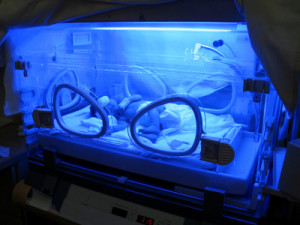 Klumpke’s palsy, or Klumpke’s paralysis, is an injury in which the nerves that control a baby’s forearm and hand are damaged during delivery. The nerves which are affected are part of the brachial plexus, an arrangement of nerves which originates between the back of the neck and spine and controls the muscles of the entire arm. If Klumpke’s Palsy is caused by malpractice during delivery, Klumpke’s palsy lawyers may be able to help.
Klumpke’s palsy, or Klumpke’s paralysis, is an injury in which the nerves that control a baby’s forearm and hand are damaged during delivery. The nerves which are affected are part of the brachial plexus, an arrangement of nerves which originates between the back of the neck and spine and controls the muscles of the entire arm. If Klumpke’s Palsy is caused by malpractice during delivery, Klumpke’s palsy lawyers may be able to help.
Klumpke’s Palsy Lawyers Assistance
Family members of a baby that has been diagnosed with Klumpke’s palsy should contact a Klumpke’s palsy lawyer as soon as possible following the diagnosis. A lawyer that has experience with Klumpke’s palsy cases will be better equipped to provide advice and assistance to family members. Birth injuries such as Klumpke’s palsy that are caused by medical malpractice during delivery may be difficult to prove. A Klumpke’s palsy lawyer will have the expert degree of knowledge required to compile the medical records and testimony necessary for a successful case in the time frame allowed by statute of limitations laws for medical malpractice.
Klumpke’s Palsy Causes
Klumpke’s palsy is often caused by difficulties during a vaginal delivery. In many cases, the infant’s weight is higher than anticipated or the mother is not properly proportioned to safely deliver the baby vaginally. In these cases, a cesarean section may prevent the nerve trauma that causes Klumpke’s palsy. It is less common, but Klumpke’s palsy may also occur later in life from severe trauma to the forearm and hand.
Medical Malpractice Causes
The cause of Klumpke’s palsy may be considered malpractice if the obstetrician does not take reasonable action to prevent the condition. If complications indicate that vaginal delivery is unsafe, an obstetrician must take fast action to order a cesarean section or other measures to ensure the safety of the infant and the mother. If medical professionals use a vacuum extractor, forceps, or improperly maneuver the infant during delivery and Klumpke’s palsy develops it may be considered malpractice.
Contributing Factors
If common contributing factors are present and the obstetrician fails to take precautions, it may be considered malpractice. A Klumpke’s palsy lawyer will be able to assist parents of infants that have been diagnosed with Klumpke’s palsy in recognizing warning signs that obstetricians are trained to be alert for. A Klumpke’s palsy lawyer will also assist in gathering information necessary to prove that the medical professions failed to respond adequately to these warning signs.
Factors that may increase the likelihood of complications resulting in Klumpke’s palsy include:
- Obesity in the mother
- Mother having small pelvis
- Family history of large babies
- Excessive weight gain during pregnancy
- Gestational diabetes in the mother
- Previous cesarean sections
- Advanced maternal age
- Overdue pregnancy
Diagnosing Klumpke’s Palsy
Klumpke’s palsy is most recognizable by the immobility of the forearm and hand, often resulting in a claw hand appearance. If an infant has not begun to use the hand and forearm shortly following delivery, the infant’s parents should bring the baby to a medical professional for examination. If Klumpke’s palsy is diagnosed and parents suspect that malpractice was the cause, the parents should contact a Klumpke’s palsy lawyer as soon as possible. If malpractice lies at the root of Klumpke’s palsy, the physician or hospital may be required to cover the costs of treatment.
Klumpke’s Palsy Symptoms
Nerve damage to the brachial plexus can range in severity, causing Klumpke’s palsy symptoms to range from mild or moderate to severe. In mild or moderate cases, Klumpke’s palsy may cause weakness or limited range of motion. In severe cases, Klumpke’s palsy can cause total paralysis of the affected hand and forearm.
Klumpke’s Palsy Treatment
With proper treatment, all symptoms of Klumpke’s palsy may eventually subside. However, treatment must begin as soon as possible, or Klumpke’s palsy may become severe or permanent. Treatments for Klumpke’s palsy require the damaged nerves to be repaired. Nerve grafts and other surgeries may be recommended. Pain medication and physical therapy are often prescribed in conjunction with nerve reparation procedures to improve mobility in the forearm and mitigate pain symptoms.
Sources:
“NINDS Erb-Duchenne and Dejerine-Klumpke Palsies Information Page.” Erb-Duchenne and Dejerine-Klumpke Palsies Information Page: National Institute of Neurological Disorders and Stroke (NINDS). U.s.Department of Health and Human Services, 14 Feb. 2014. Web. 16 Apr. 2014. <http://www.ninds.nih.gov/disorders/brachial_plexus_birth/brachial_plexus_birth.htm>
Storment, Margaret. “United Brachial Plexus Network.” GUIDELINES FOR THERAPISTS: Treating Children With Brachial Plexus Injuries. United Brachial Plexus Network, 1 Jan. 2014. Web. 16 Apr. 2014. <http://www.ubpn.org/resources/medical/pros/therapists/122-therapyguidelins>
